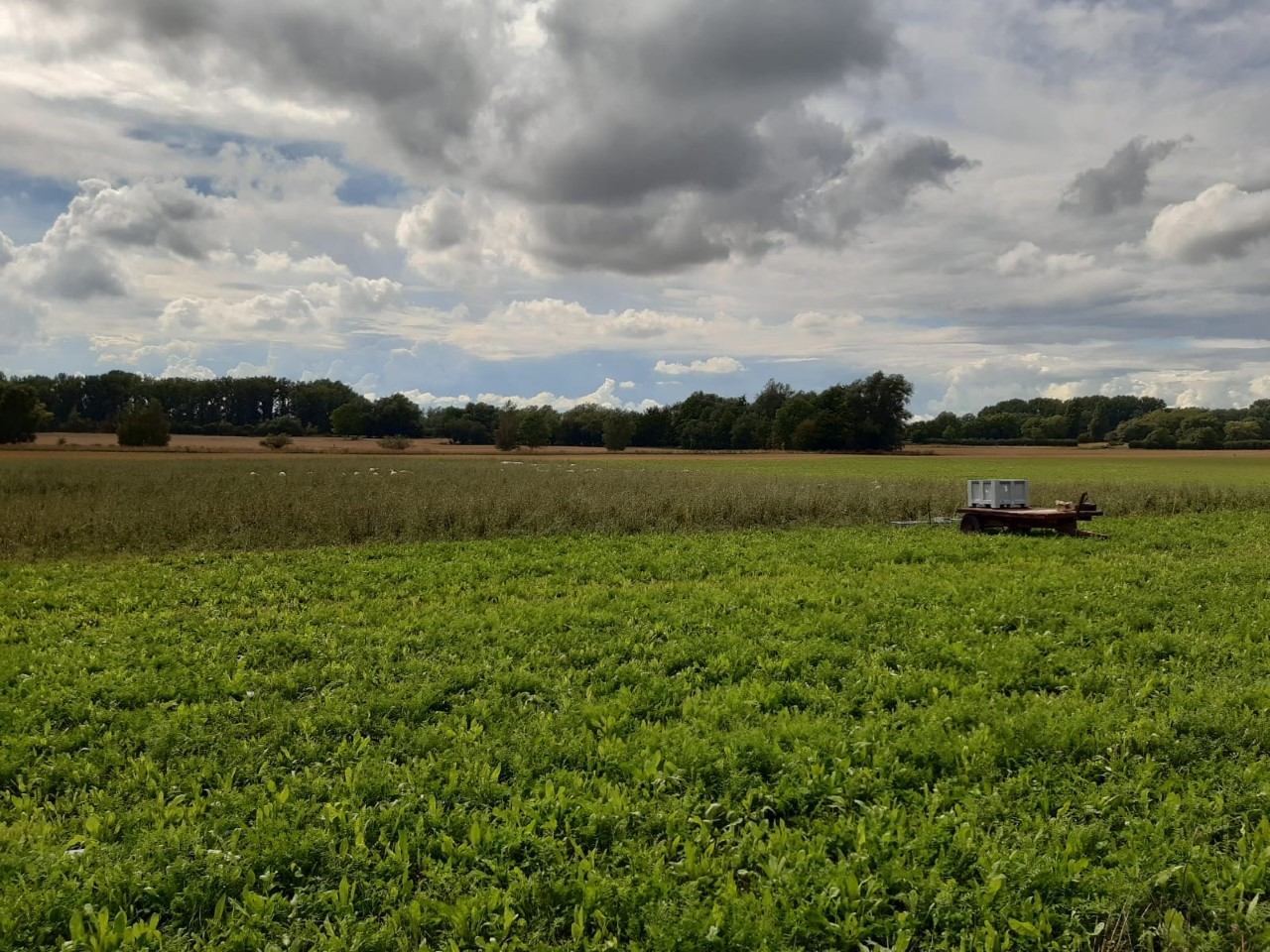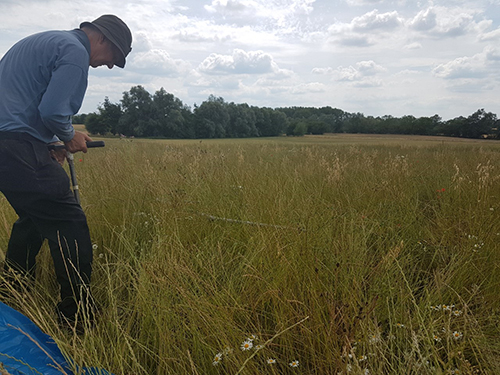Soil quality restoration and sheep production
Soil Quality
Using farm-scale split field experiments at our field sites across England we are monitoring changes in soil quality. We are currently taking measurements to compare the effects of herb-rich and conventional grass-clover leys under either sheep grazing or mowing on soil quality. Examples of soil properties being monitored include pH, bulk density, soil structure, soil organic matter, and mineral N. Other measurements include earthworm populations, ley biomass production, and faecal indicator organisms (e.g. E. coli) associated with sheep faeces.
Prof. Jonathan Leake soil sampling in the grass-clover ley at the Duxford field site in June 2019. Photo credit: Emily Cooledge, Bangor University.
Sheep Production
Currently, there is very little information available for sheep productivity when grazing herb-rich leys. Key plant species in herb-rich leys, e.g. sainfoin and chicory, contain high concentrations of plant secondary metabolites (PSMs) that can affect livestock health and nitrogen use efficiency in grazing ruminants. During this project we will measure sheep liveweight gains and gastrointestinal parasite burden through faecal egg counts.

The split field experiment grazed by lambs at Loddington, Leicestershire in 2019. The herbal ley is on the left with the grass-clover ley on the right. Photo credit: Prof Jonathan Leake, University of Sheffield.

